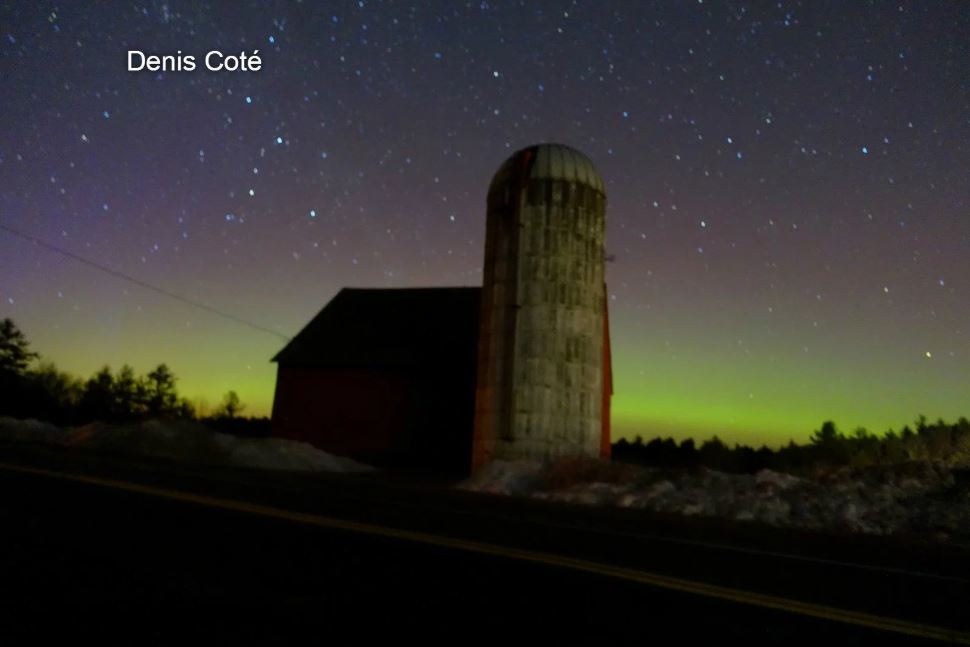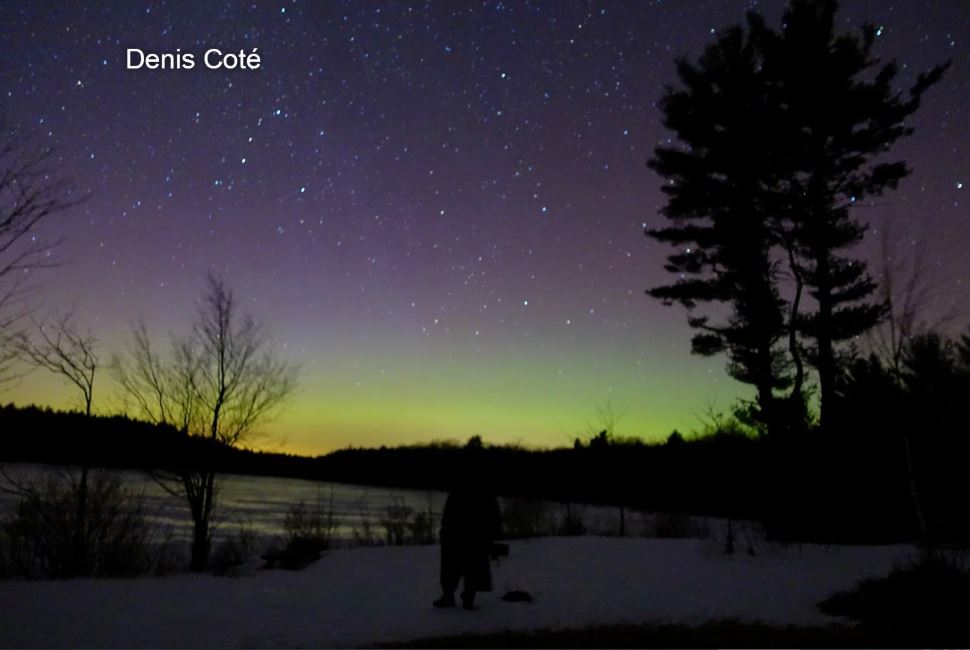Historical Tidbits
The Changing Nature of Colebrook
Aurora Borealis Spotted in Colebrook, CT – 2015
On a cold, clear night in March, 2015, local photographer Dennis Coté took photos of the sky over the Hale Barn near the center of town. A solar flare earlier made the the spectacle of the Aurora Borealis, or Northern Lights, visible much farther south than normal. “The Aurora Borealis tonight was simply an amazing experience,” Coté said, “Nothing like it.” He set his camera to a 13 second exposure (f/1.8 and ISO 1600 for you photo buffs). Coté said he could also see Venus glowing bright in the night sky over New Marlborough. (Fox61, posted by Spencer Allan Brooks, March 18, 2015 ~ Photo Credit: DenisCote).


The Changing Forest Composition in Colebrook
According to a survey done in 1760, there were 19 varieties of trees in Colebrook. The majority of the forest (81%) was comprised of beech (45.5%), hemlock (24.75%), and maple (11.1%). Beech and hemlock grow well in shade, which indicates there was a thick forest here at that time. Colebrook is included in the Northwest Highlands of Connecticut, which differs from the rest of the area. Our native forest was clear-cut at least twice, resulting in a different mix from the original. A major change came in the early decades of the 1900s with the decline of the chestnuts. Today, our forest is comprised mostly of hardwoods and is changing to mainly maple and oak, which thrive in more light. This indicates a forest less dense than it was 250 years ago.
Silkworms in Colebrook | The Rise & Fall of Mulberries
In the early 1800s, Colebrook was involved in the thriving silk industry with many mulberry trees introduced here, particularly in the Colebrook River area. These trees were nurtured to provide food for silkworms. When the worms spun cocoons, they were shipped east to silk mills, such as those in Manchester, CT. But economic forces and the fact that the white mulberry, which is best suited for feeding the silkworm, wasn’t hardy enough for the northern states, brought the downfall of the silk culture in Connecticut. There was one white mulberry alive in Colebrook a few years ago, but we have found no living mulberries in town.
The Colebrook Land Conservancy
Post Office Box 90
Colebrook, Connecticut 06021
info@colebrooklandconservancy.org

Our Mission
Preserve and conserve the special and unique characteristics of Colebrook—rural, historic and scenic—using accepted land conservation techniques and education in cooperation with the Town, the community and other groups.
